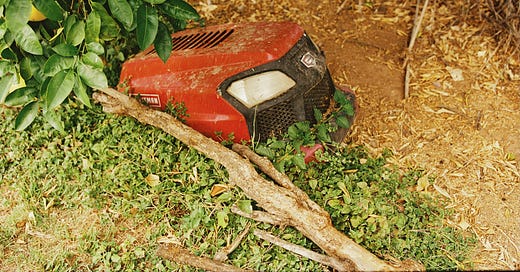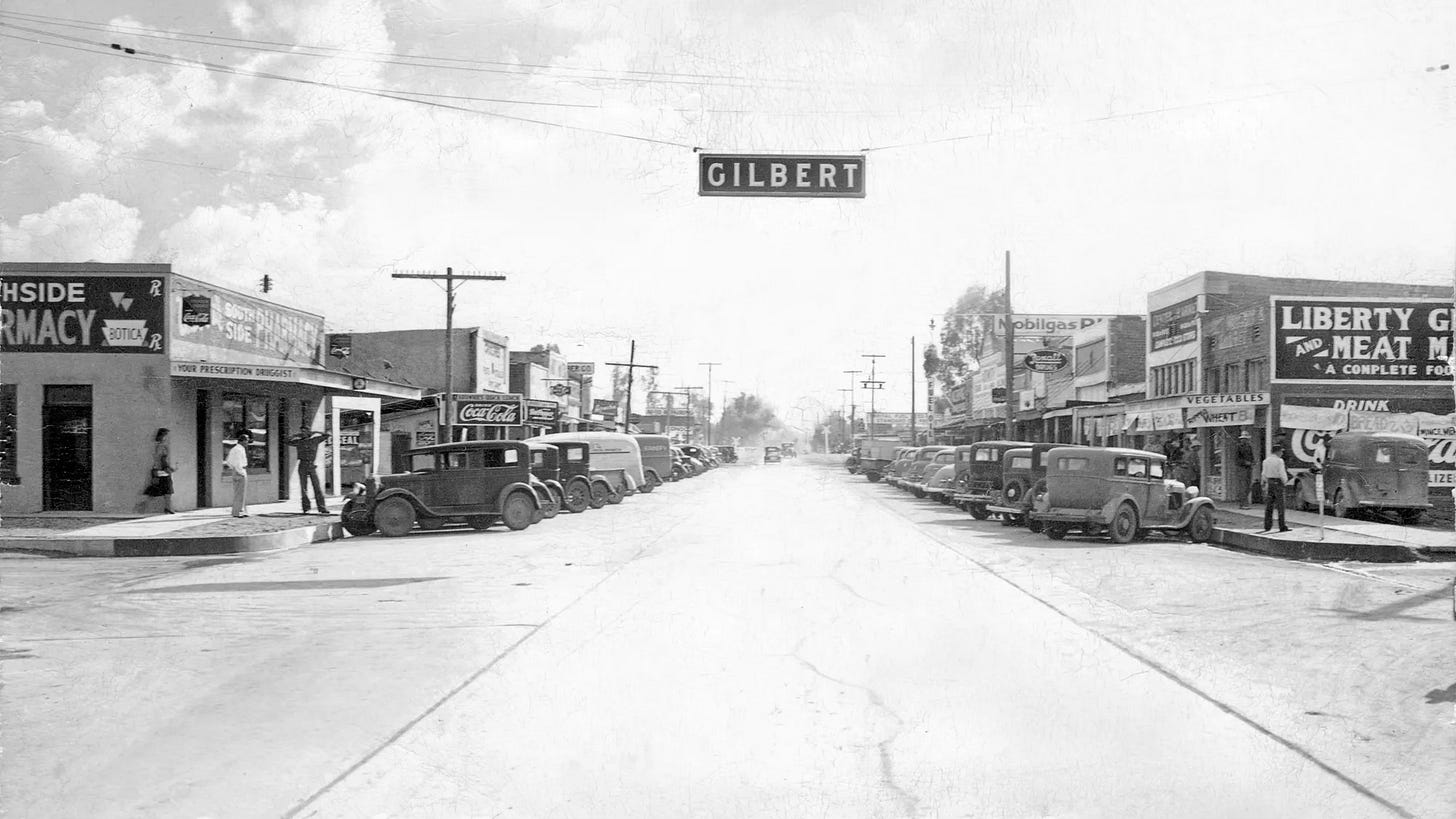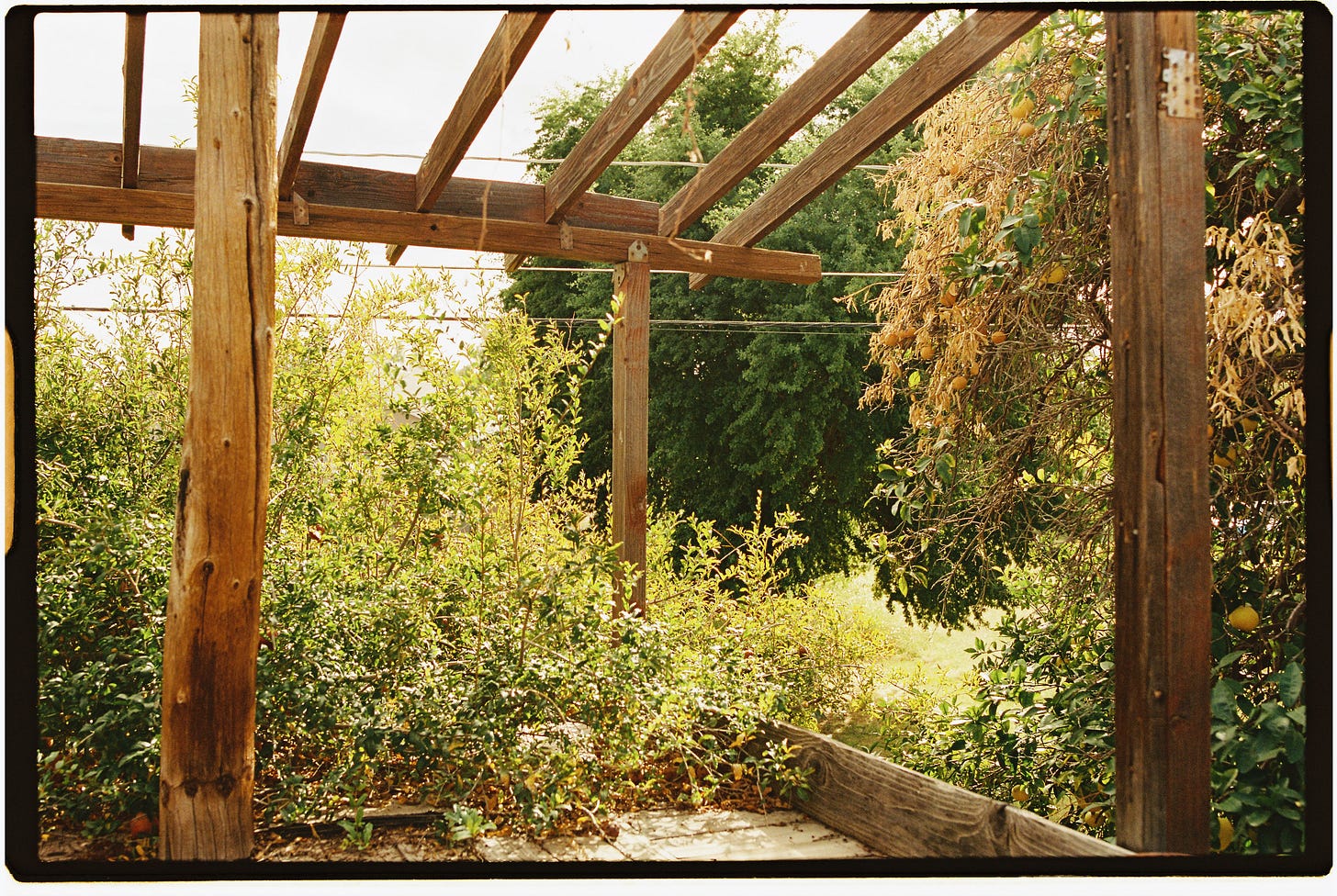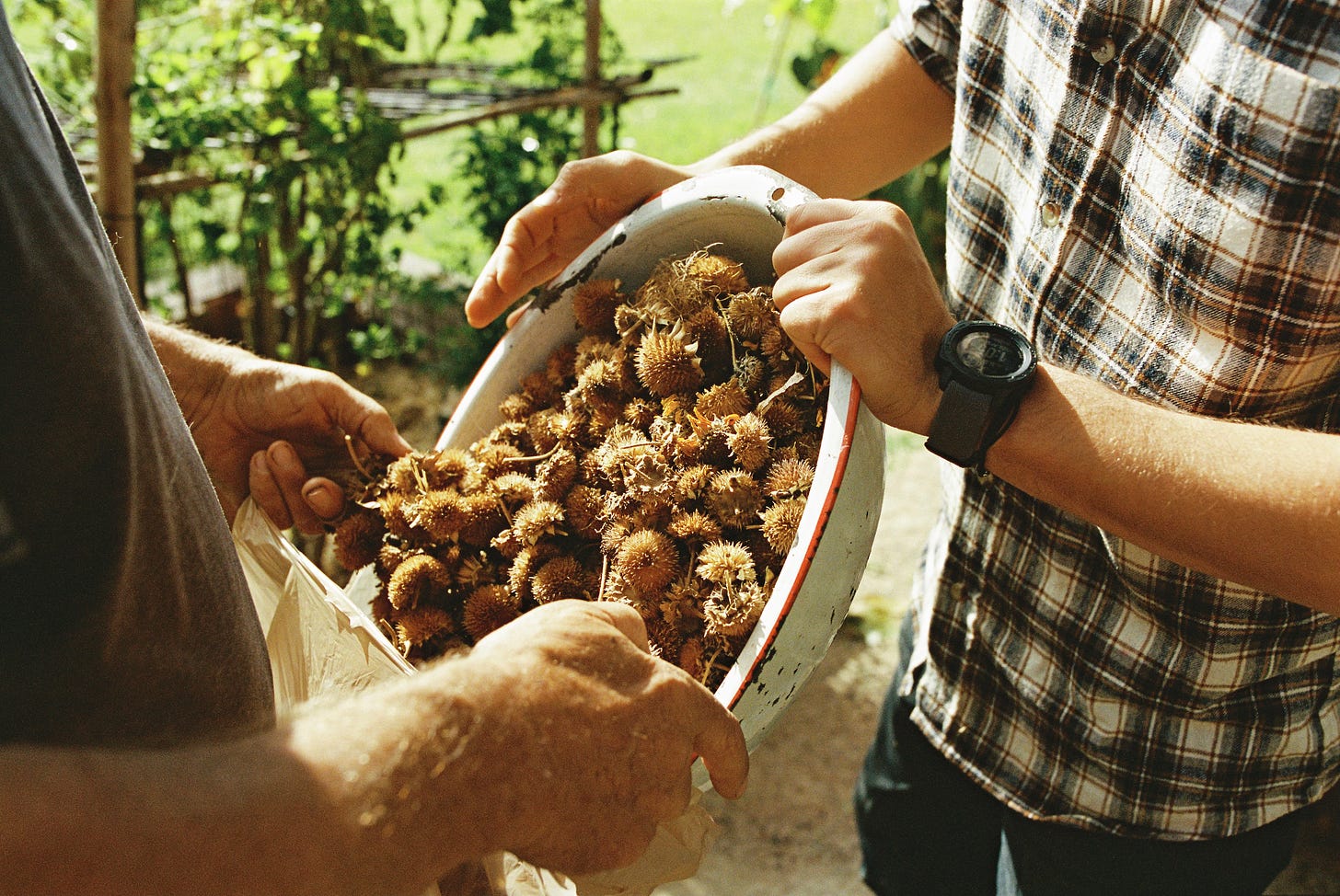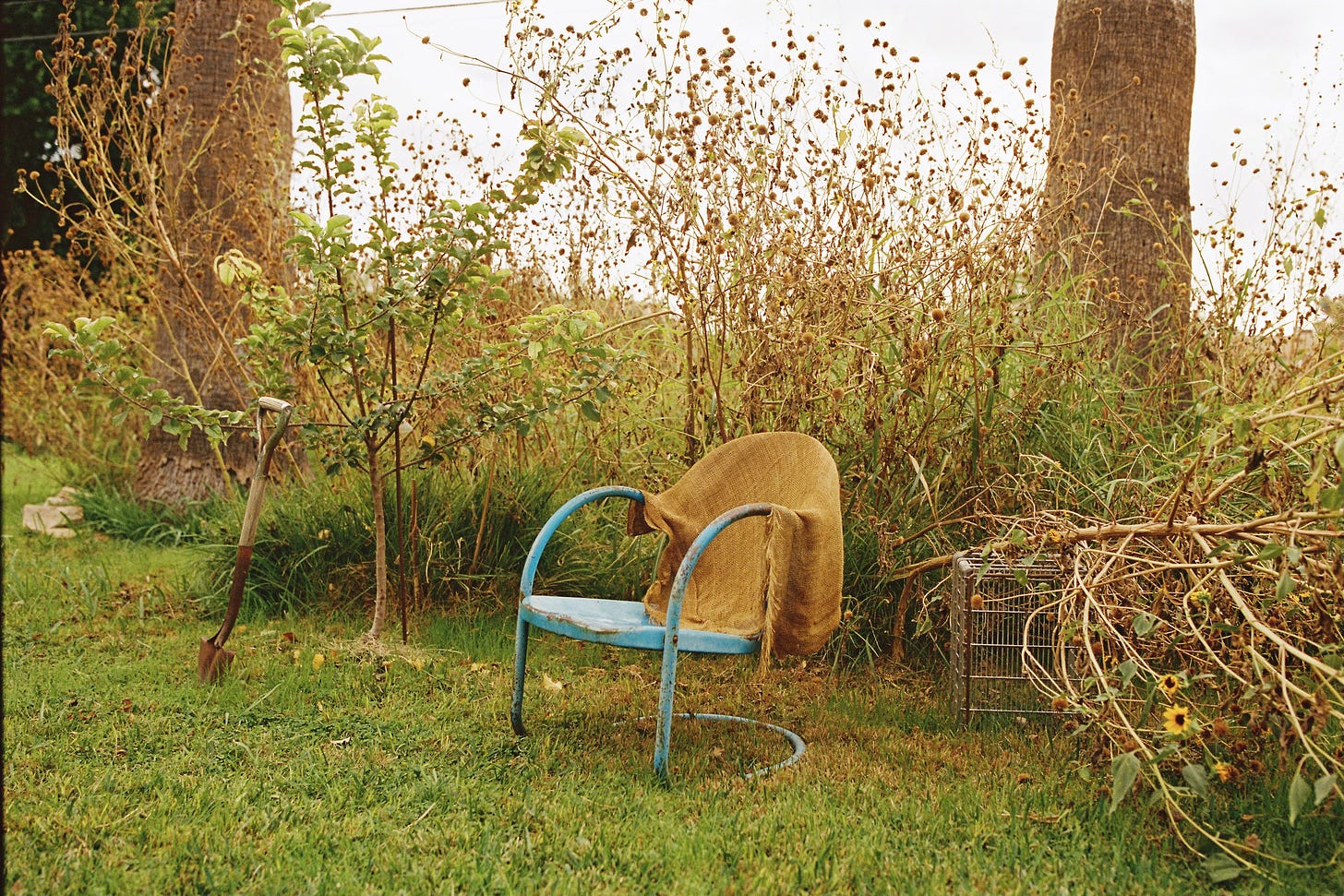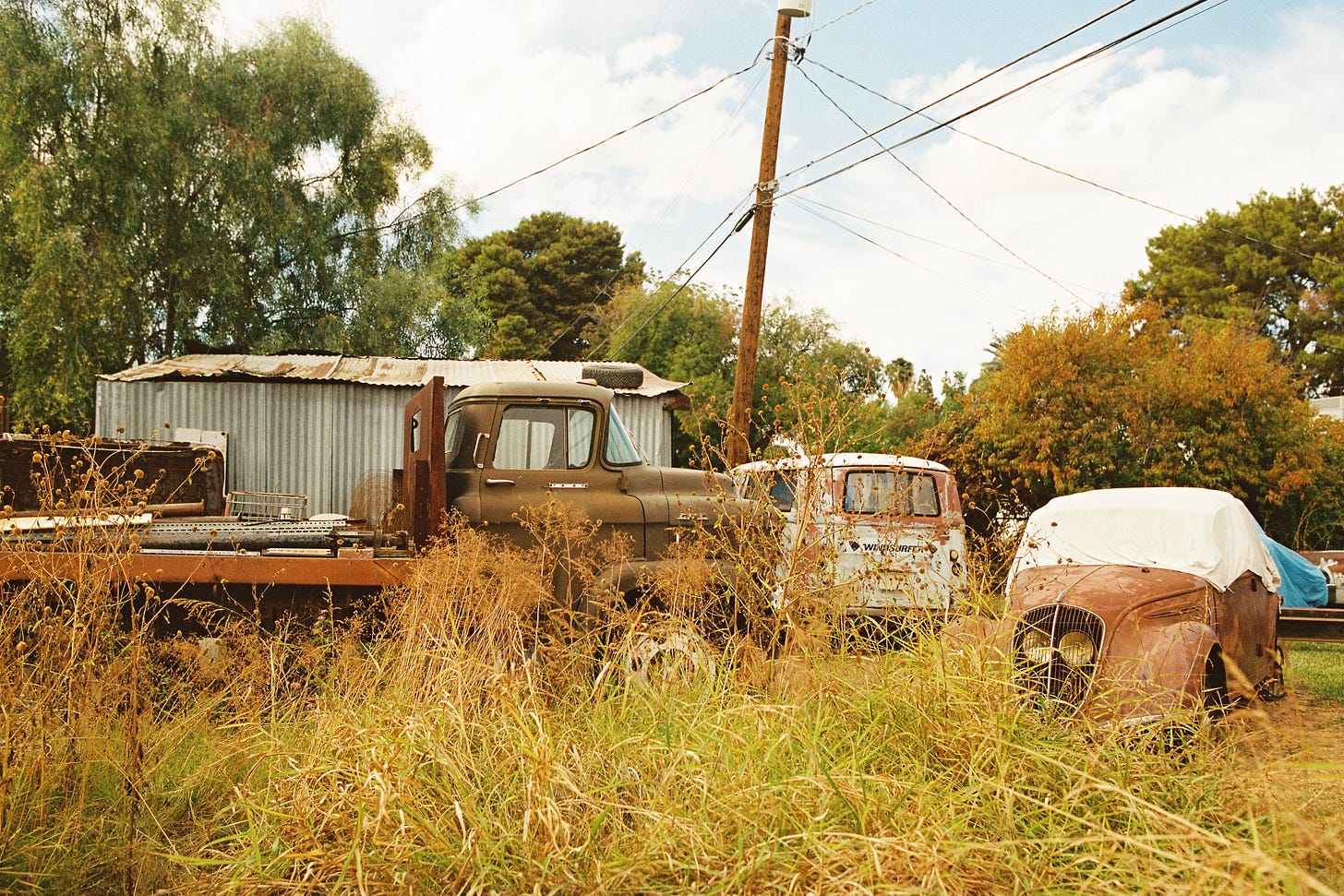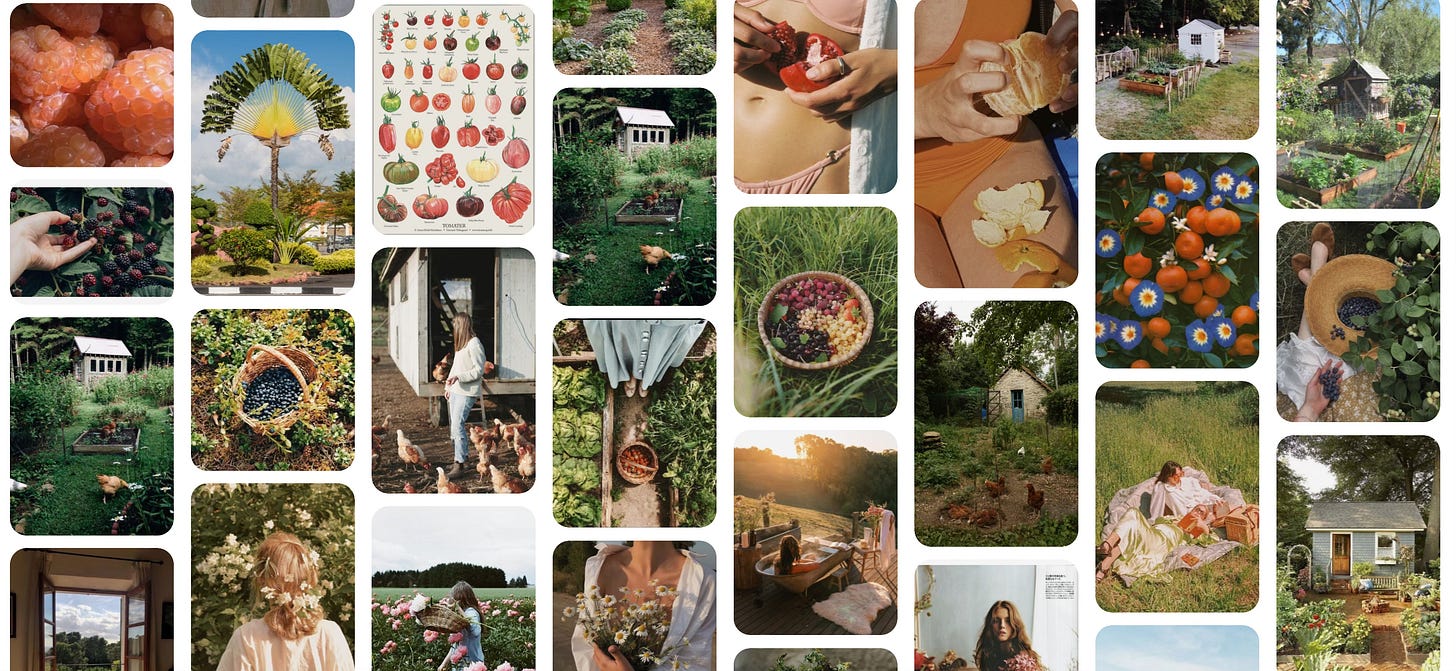I'd Rather Have a Messy Yard Than an HOA
De-weeding is killing your lawn, tales of my childhood home, and visions for our own backyard.
While our nation's post-war endgame was perfectly curated neighborhoods with dwellings framed in identical layouts and picket fences, this vision has since diluted the core of our human purpose: building, connecting, and standing truth.
When you picture American suburbia — what comes to mind?
Without automatically stereotyping the family portrait, imagine the front yard first. The grass is freshly cut, the 4-doored car is hidden inside the garage, and the porch exhibits a pot of perky hydrangeas (likely watered by a non-resident). It's clean and well-kept, but these uniform rows of square houses that make the American dream so recognizable feel, ironically, dystopian under the surface.
And now's the time to scoff because — yes! My husband and I bought a house in a popular suburban area of Pheonix Valley at the end of 2021. It's safe, charming, and has a glorious familial farming history. Still, it contrarily screams white Karens and right-leaning Mormon families that thrive off neighborhood gossip (or, sadly, cover up their child's murders).
Our town is the quintessential power symbol of our country's post-war prosperity. We have excellent schools, miles of houses in a single corridor with no yard that all look the same, and picture-perfect families on their morning walk with a poodle, golden retriever, or hybrid of both.
If Leave It To Beaver was filmed in this generation, it'd undoubtedly be settled in Gilbert, Arizona.
HOAs — An Unnecessary Evil
While the sentiment for orderly conduct makes sense for sardine-compacted properties on minimal lot sizes, the very core of an HOA glistens with an active allure: money.
Creating private subdivisions offers a significant advantage in density, allowing developers to build more homes on less land. This approach has been a critical factor in the boom of suburban housing developments. However, it's essential to acknowledge that this trend has sometimes been driven by the desire to exclude specific groups, particularly minorities and lower-income families. This exclusionary aspect reveals suburban development's complex and often troubling side beyond the criminal overcharge fees and fines.
"This is the Reagan-era idea: the market will solve all our problems. No, it won't. It's not going to solve everybody's problems. It'll work out for some people, and for others, it will be a disaster." - VOX Media.
Where We Live & Where I Grew Up
We chose our particular street for several reasons.
Our neighborhood does not belong to an HOA, and it's immediately apparent upon turning the corner. You have the 80-year-old lifer down the street with a beatdown van in the driveway, leaving room for his grandson's Toyota Camry for weekend visits.
You have the Bustamante family with group bonfires and lively music over the speaker on Friday nights on the front porch, open-door style.
On the corner of Pinon Street, you can see a Green Bay Packers-themed covered wagon, surrounded by last year's tangelos, now bruised and scattered across the patchy Bermuda grass.
It's an unruly yet equally beautiful street birthed in the late '70s, just before the housing market turned south. A neighborhood built to cater to the once wealthy, to housing the lower-income families during Regean's supreme, back again in an inflated economy with quenchable prices to those wanting to flip for short-term rentals. America's modern real estate in a nutshell.
My father's neighborhood, where I spent my childhood, starkly contrasts the typical American Dream. It retains its unique charm, albeit with a more feral and often perceived 'disorganized' appearance. The remnants of overgrown trees he chopped down last spring are still piled up in the front yard, along with four broken trucks in the driveway. His backyard is like stepping into a Jumanji-style adventure.
To some, it might look like a chaotic mess due to its wild landscaping. But I see it differently. Amidst this apparent disorder, there's a rich diversity of plant life: numerous fruit trees, ten different types of wild perennials, the groundcover with purple-flowering petunias, banana stalks, and a 100-foot Texas Ebony tree grown from seed. It's a thriving one-acre lot in the heart of the city, complete with its own irrigation system. You seriously don't see that anymore.
Its stark appearance isn't a result of neglect or laziness; it's a deliberate and thriving permaculture ecosystem.
I see a man whose 36 years as a delivery driver have taken their toll, leaving him too weary to mow the lawn after a day's work. I understand his reasons for leaving the wild onions untouched near the date palm; he enjoys them for breakfast or as a mid-day snack. I also noticed the grass sprouting between the peach stalks and the bird's nest above the wooden treehouse he built for me in middle school.
In this garden, everything has its place and purpose. This natural, unstructured environment wouldn't be possible if my father's neighborhood were governed by restrictive private regulations.
It thrives because it exists organically and holistically, free from such constraints.
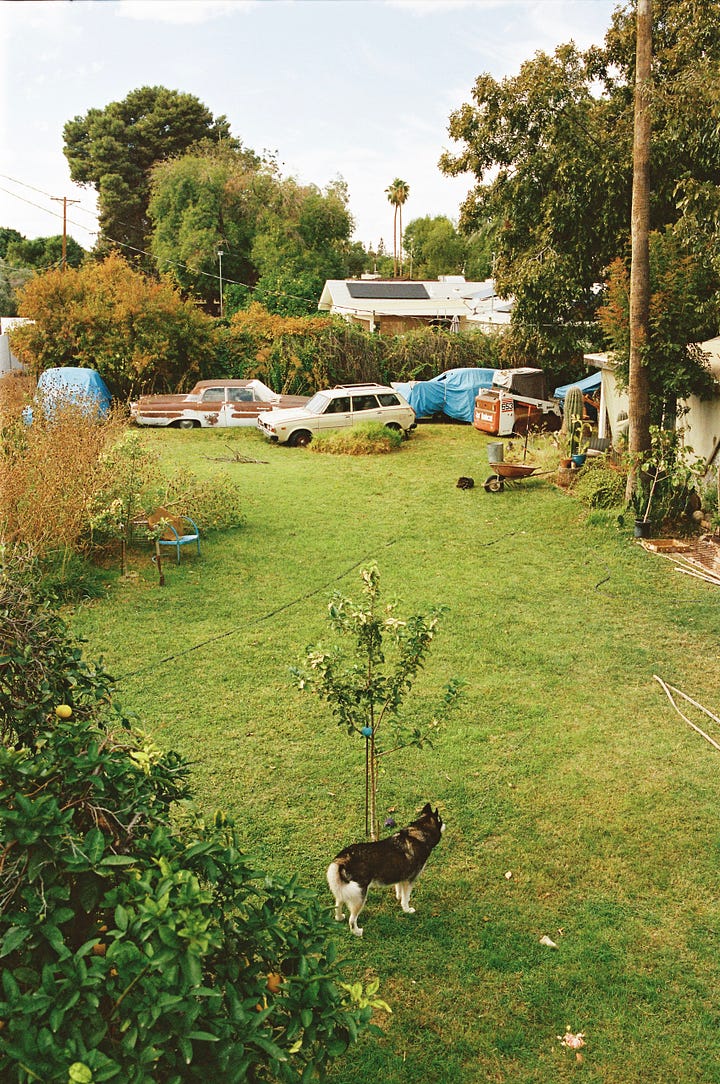
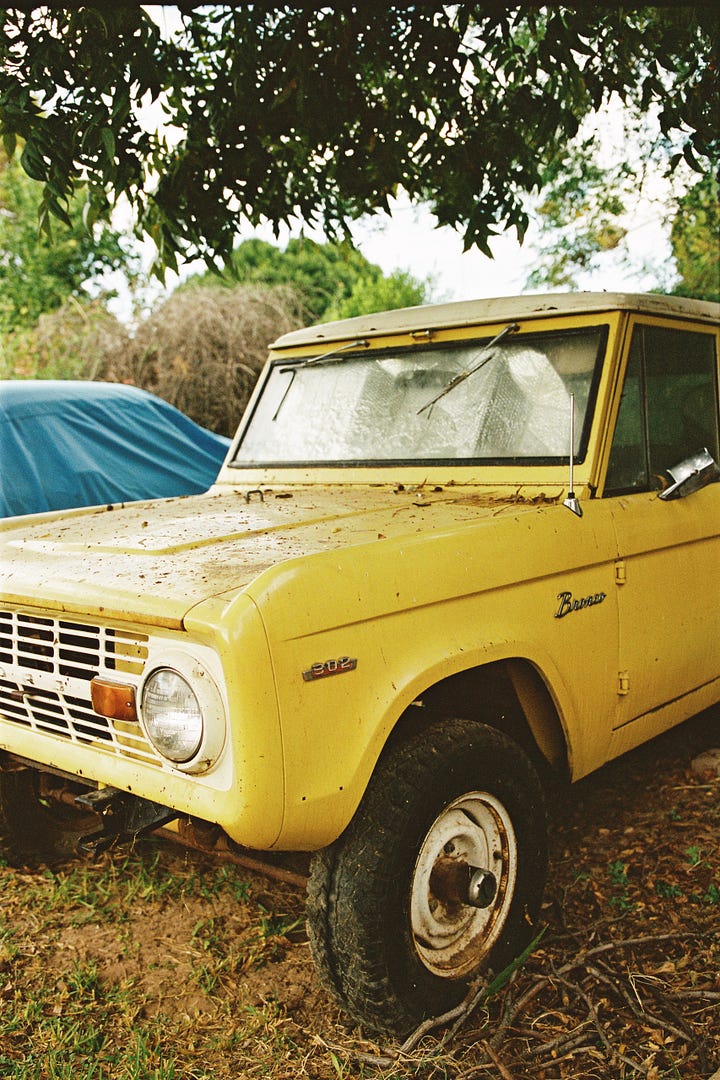
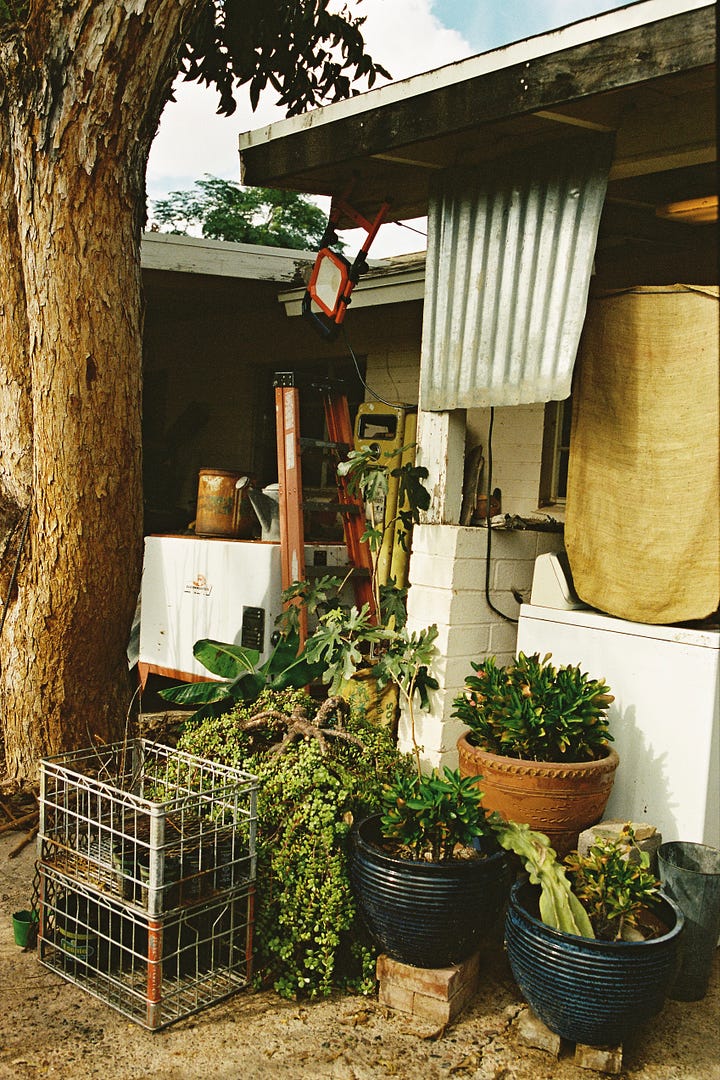

In Defense of "Mess"
My collection of front and backyard design ideas on Pinterest would not flourish in a neighborhood governed by private naysayers. This is because the rigorous yard maintenance and frequent weed whacking required by many HOAs don't contribute to the garden's health. Instead, they create the illusion of care while potentially harming the land. These activities don't add nutrients or promote regrowth; they're more about maintaining appearances than nurturing the environment.
Effective garden design means leaving it untouched for more than two weeks and having it thrive entirely on its own. Creating a yard's own microclimate is the key to permaculture design; I've written a few articles like this featured on Taproot Mag and Edible PHX, and this website shows an incredible breakdown for those needing a reader's digest.
"Weeds" is a made-up word crafted by rich marketers designed to kill your lawn.
Rise above it.


